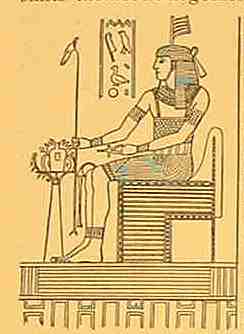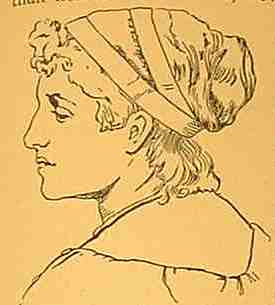

|
The Parents' ReviewA Monthly Magazine of Home-Training and Culture"Education is an atmosphere, a discipline, a life." ______________________________________ Drawing in Infant Schools.A Study in Practical Psychology. [Thomas Godolphin Rooper, 1847-1903, was an inspector of schools and personal friend of Charlotte Mason; much of his writing was for her P.N.E.U. meetings. His essay "Lyonesse" describes his time as a student at the Harrow boarding school. After he died (of spinal tuberculosis at the age of 56), Mason wrote a chapter in his honor which appears in her book, "Formation of Character," vol 5 of her series. He never married.] Children who have never handled a pencil before behave quite differently from those whose work has just been described. "I placed," says M. Passy, "a vase before a little girl of six years, a daughter of a peasant, who had never drawn before. It was difficult to get her to set to work. She took up her pencil, but, instead of using it, put it into her mouth, bent her head over the paper, shifted uneasily on her chair, twisted her feet round the bars, and displayed every sign of embarrassment; then she took a long look at the model and seemed to address herself as to a task of great difficulty. At last, she brings it so far as to put her pencil on the paper, but, even then, she could not make up her mind to begin. In order to make her understand what I want, I hold her hand and guide it so that she makes the outline of the vase. Then she makes an attempt of her own, although not without much hesitation and embarrassment. The result is quite formless, and I am obliged to ask her to explain the different parts which are to me incomprehensible. It was, however, some compensation to find that a second attempt, made some days afterwards, without any remark having been made about the first, displayed a striking advance. There was a most striking contrast in respect of capacity for improvement in the peasant child, who had never drawn before, and the little Paul and Octavius, who were experienced nursery artists." M. Passy finds that, as compared with the children of wealthier people, the little peasant boys and girls are more conscientious in their drawings, bring to bear more power of attention, and make more sensible progress. It would appear that the habit of seeing and imitating ready-drawn representations of objects blunts the edge of personal effort even in dealing with fresh objects. A very few experiments are sufficient to convince the observer of the facility with which the hand and eye fall into routine. The tendency to repetition manifests itself sometimes after even a single drawing, and this is specially the case when the drawing is left in the child's hands. In this case, the child almost always copies himself. In making experiments, therefore, of this kind, care must be taken (1) to avoid objects which the child has drawn, (2) to avoid objects which he has seen other children draw, and (3) to attend to those mistakes chiefly which recur with a certain persistency. It will, I think, be clear that the rude representations of objects which the children make are often not taken by their authors to be true pictures of the objects, but rather conventional ways of representing them, whether designed by themselves or copied from other sources. Nevertheless, in spite of this mental reservation, there is a tendency for these pictures to act injuriously in two ways. In the first place, they soon become deeply engraven on the memory and supplant the more accurate mental images formed by the contemplation of the object; and secondly, they form a kind of mould into which all fresh observations are run, and thus prevent the child from gaining new knowledge, even by a prolonged study of the object. The imperfect mental image hinders the acquisition of knowledge, partly by preventing any attention being paid to special features, or features not previously observed; and partly because, through mental laziness, the familiar mental and conventional image of the object supplants the fresh image before it has had any permanent effect. Rapidly recognizing the object from a superficial glance, the child refers it to the type already existing in his mind, and is at no pains to acquire additional details beyond those which are already contained in that type. The child looks and learns nothing. Eyes he has, but he cannot see. The senses, which are the foundation of knowledge, are here a hindrance to it. I have now, however, to revert to the drawing of the face and the mug with misplaced nose and handle respectively. Some little time ago I asked a little girl to write an account of one of the pictures in her school. "In our school," she began, "there is a picture of a horse. It looks you straight in the face. I think the artist must be very clever, for anyone can draw a horse sideways; I can do that. But I cannot draw the horse when he stands so that his head is in front of his tail." Now, one of the first results which appear from a comparison of several drawings, especially if you arrange them in tables of two columns, one of which shows the actual position of the object and the other the position drawn by the child, is this: things which are correctly drawn in one position are hopelessly incorrect in another. Moreover, different children attempting the same object err in precisely the same way. What is the law of error? It seems to be as follows: the drawing is correct or not, according as the visual impression is or is not in accord with the idea of the form of the object which is in the mind of the child before commencing. The child's prepossessions are the chief source of error. The great difficulty is the third dimension of space. The child has at his disposal only two dimensions on his paper, and he does not know how to indicate the third, which his previous knowledge acquaints him within the object which he is trying to draw. When, for instance, the cup was set up so that the handle stood out at the side, the child drew it correctly. In the case where the handle projected towards him, and was seen, therefore, in relief, his drawing was erroneous. His action in trying to draw the cup in this position was important to note. He leaned himself sideways, forcing himself into an attitude in which he could see the object as it appeared to him in his mind. In other words, he adjusted the model to the existing mental image instead of acquiring a new mental image. In the end, he drew the handle, not as he saw it, but as he knew it to be. It is now easier to understand how it is that in drawing a face, the child is apt to put the nose at the side when the face looks full at him. It is in accordance with a sort of law that the child sets fore-shortened parts of objects at the edge of the figure, making them full size. In some cases, the child omits the nose altogether when the face is full. The child's treatment of the eye is very interesting. Seen in profile, the eye is fore-shortened, but the child draws it as if he saw it in full face. The child only sees a part of the eye. He restores the other part as he knows it is. Curiously enough, this error is seen in the work of savages, in the quaint relics of the Mexicans, and even in the much more advanced art of the Egyptians.  In drawing the full face, it will be observed that the child makes the ears as he sees them when the head is in profile. He does not fore-shorten them. Here, again, he is reproducing an old mental image, and not one formed at the time of drawing. I noticed one curious variation in which the child drew the side face the same as a full face, except that he made the chin point the way the face was directed. Experiments in the child's drawing of perspective produce similar results. Placing a simple box before a child full front, he drew rightly enough a rectangle. On changing the position so that he saw two sides in perspective, I got a curious drawing. He drew two separate and disconnected figures; the one a rectangle as before, and the other a square, drawn a little distance from it, intended to be a representation of the shorter side of the box. In another case, the child drew the two sides of the box in position, but did not make the more distant line smaller than the nearer one, so that perspective was omitted altogether. Of course, here again the child drew, not the object which he saw before him, but some image which he had already in his mind which was called up by a glance at the object. His eye, if he attended to what it told him, would give him the image of receding lines as smaller than nearer ones. He is, however so accustomed to make corrections in the gifts of his senses that he cannot grasp the object as it presents itself to him in nature, but sees only the corrected image of it. The mind falsifies the impression which it receives through the sense of sight.  As might perhaps be expected, it is very hard to convince a child as to what he really does see. The previously acquired mental image overpowers the present impression altogether, and nothing is learnt from the latter. Mons. Passy tested the matter by showing the children a photograph of a funnel with the neck fore-shortened; they think it is a nosegay. A flat-iron with the handle turned to the front they pronounce to be a bell. Yet drawings of these same objects, however rudely executed by one child, are recognized with ease by another. (To be continued.) Proofread by Stephanie H. September, 2008; Proofread by LNL, May 2021  |
| Top | Copyright © 2002-2021 AmblesideOnline. All rights reserved. Use of these resources subject to the terms of our License Agreement. | Home |